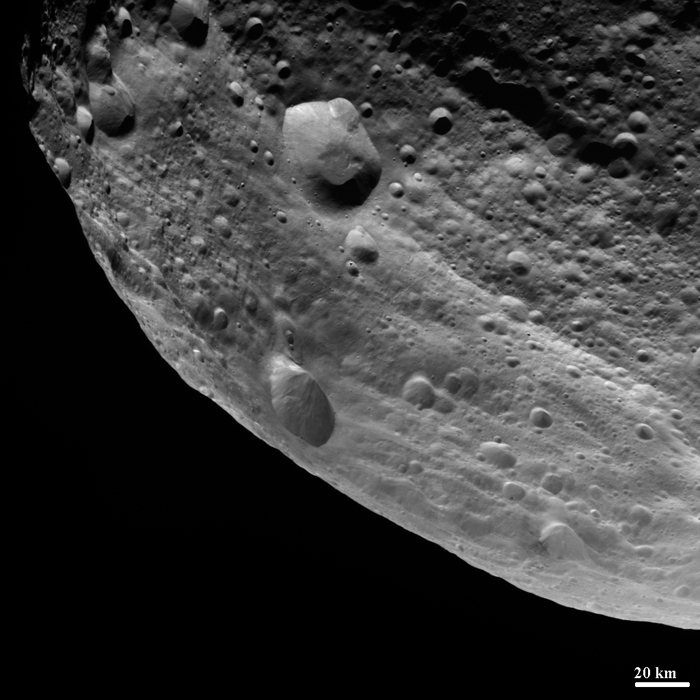 The Dawn Spacecraft has been orbiting at Vesta for some time now. Surely some great science, but visually we are looking at an object that reminds us very much of the Martian moon Phobos. And like so many of the smaller rocky bodies of the inner solar system — up close, most images could easily pass for Apollo images of our own moon.
The Dawn Spacecraft has been orbiting at Vesta for some time now. Surely some great science, but visually we are looking at an object that reminds us very much of the Martian moon Phobos. And like so many of the smaller rocky bodies of the inner solar system — up close, most images could easily pass for Apollo images of our own moon.
However, there are some things we haven’t seen very much of on rocky surfaces like Vesta. Dark and light ejecta material reminds us more of what we see at Iapetus and Hyperion (both Saturnian moons) — which are largely moons of ice.
The grooves which nearly reach all the way around Vesta are very similar to the grooves found on Phobos (a rocky Martian moon). Many scientists believe those lines came from the cataclysmic event that formed Stickney Crater which nearly shattered the small moon, but instead left behind rippled scars as gravity pulled it all back together. Similarly, an enormous crater at the Vesta's south seems to correspond to these multiple ridges.



